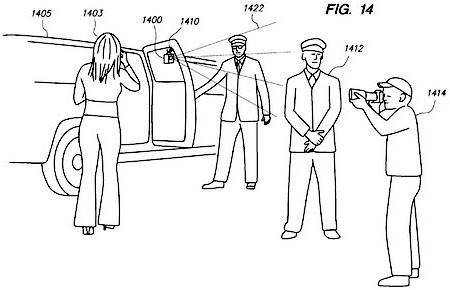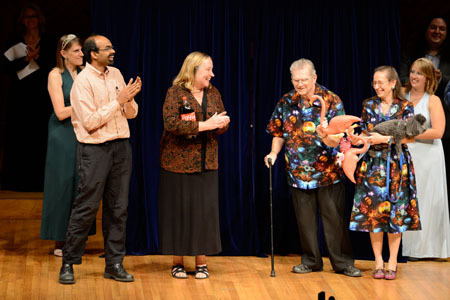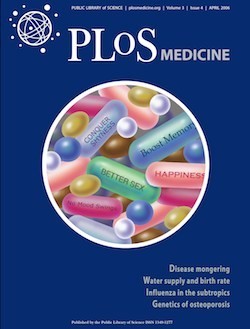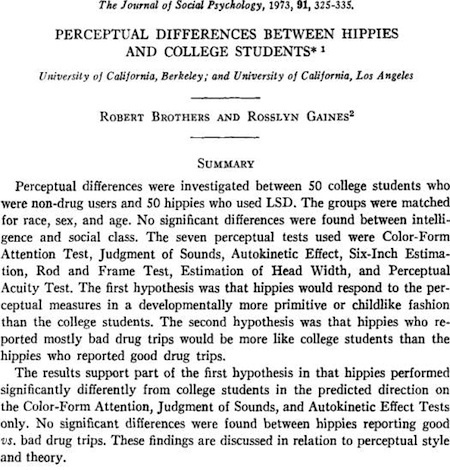Marc Abrahams's Blog, page 488
June 3, 2013
Flashy ways to fight off paparazzi, spies… and anyone else
A new invention aims to foil paparazzi who try to photograph people who do not wish to be photographed. Wilbert Leon Smith, Jr. and Keelo Lamance Jackson of California obtained a patent last year for what they call “Inhibiting Unwanted Photography and Video Recording”. Their invention builds on a simple idea patented in 2005 by Jeremy and Joseph Caulfield from Arizona.
The Caulfields equipped celebs with a flashgun that fires automatically the instant another flashgun fires nearby. Smith and Jackson’s device goes that bit better: it’s a rotating, swivelling, oscillating device that can emit multiple strobe lights and other light beams for as long as the celebrity deems necessary.
The device has uses beyond deterring pesky paparazzi. As Smith and Jackson explain, it can also protect our own spy agencies against nosy foreign bad guys…
—So begins this month’s Improbable Research column in The Guardian.
Here’s a technical drawing from the Smith/Jackson patent:

BONUS: Martin Gardiner’s report on this.

Sandcastles in academia (part 2 – the point)
 Sandcastles, in general, don’t tend to last. They are transient. Maybe even a metaphor for transience. Suggesting, perhaps, the question ‘What’s the point of building one?’ Steps towards answers are provided in a paper for the scholarly journal The Senses and Society, Volume 4, Number 2, July 2009 , pp. 195-210(16). Where author Dr. Pau Obrador-Pons PhD, MA, BA (Hons) who is a senior lecturer in tourism, of the Faculty of Business and Law, University of Sunderland, UK, explains that :
Sandcastles, in general, don’t tend to last. They are transient. Maybe even a metaphor for transience. Suggesting, perhaps, the question ‘What’s the point of building one?’ Steps towards answers are provided in a paper for the scholarly journal The Senses and Society, Volume 4, Number 2, July 2009 , pp. 195-210(16). Where author Dr. Pau Obrador-Pons PhD, MA, BA (Hons) who is a senior lecturer in tourism, of the Faculty of Business and Law, University of Sunderland, UK, explains that :
“The point of building a sandcastle is not the mimetic reproduction of a preformed image but the actual process of building it.”
To expand :
“Building sandcastles is first and foremost a ‘performative experiment’ (Thrift 1997: 145), one that uses the elusory qualities of touch, in particular the manipulative hand, to disclose virtual worlds. Through the manipulation of the sand, alternative ways of being are configured, new geographies are opened out, new connections and assemblages are tested, and some meanings and utopias are spatialized.”
see: ‘Building Castles in the Sand: Repositioning Touch on the Beach’
COMING SOON : in Sandcastles in academia (part 3) ‘What is a sandcastle?’
BONUS : The science of ‘How to Build the Perfect Sandcastle’ from BBC Focus Magazine (from which the still above is taken)

May 29, 2013
A Spacesuit Ballet
Science Friday produced this video, which gets progressively more involved. Their blog describes it:
Of the spacesuit he wore on the moon, Neil Armstrong wrote, “it was tough, reliable, and almost cuddly.” But that cuddly suit, made by the company Playtex, had some stiff competition (literally) from rival rigid, metal designs.This SciFri video features archival NASA footage of mobility tests for several spacesuit prototypes (watch for the human bubble design!). The music is from the awesome band One Ring Zero’s album “Planets,” which you should listen to in its entirety by buying it here. A galactic thanks to them for sharing their music with us.


‘Genitalia Are A Punch And Judy Show’, says Schilthuizen
![Ig Nobel 24/7 Lectures, Leiden [photo Kees Moeliker]](https://i.gr-assets.com/images/S/compressed.photo.goodreads.com/hostedimages/1381405039i/4813283.jpg) This picture, taken at the recent ‘Ig Nobel 24/7 Battle’ in Leiden, The Netherlands, needs some explanation. Here is the explanation:
This picture, taken at the recent ‘Ig Nobel 24/7 Battle’ in Leiden, The Netherlands, needs some explanation. Here is the explanation:
Professor Menno Schilthuizen, the man standing at right, is just about to start his 24/7 Lecture. He holds two hand puppets, which did the talking [in Dutch]. The person in the middle is Frank van Rooij. He acts as a ‘human pedestal’. On the left, referee Maarten Keulemans (science editor of De Volkskrant) is holding a whistle and checking time.
Menno Schilthuizen was elected the winner in this competition between six prominent Dutch scientists. Each gave a 24/7 Lecture, in which she or he explained her or his subject twice, first: a complete technical description in twenty-four (24) seconds, and then: a clear summary that anyone can understand, in seven (7) words. This modern science-communication concept — the 24/7 Lecture — dates back to the early years of the annual Ig Nobel Prize Ceremony.
This is Professor Schilthuizen’s winning 24/7. He presented it in the form of a dialogue between two hand-puppets about ‘Evolutie van genitalia’ [Evolution of genitalia]:
[24 seconds] “Snelle, stochastische morfologische evolutie van mannelijke genitaliën kan gedreven worden door cryptische postcopulatoire seksuele selectie door het vrouwtje op basis van genitale ornamentatie.” “Niettegenstaande dat, kan interseksuele competitie waarbij mannelijke manipulatie een fitness-verlagend effect bij het vrouwtje heeft eveneens leiden tot zulke vormdiversiteit.”
[7 words] Tussen de benen staat een evolutie-poppenkast!
[English translation, which might take more, or perhaps little less, than 24 seconds] “Rapid, stochastic morphological evolution of male genitalia may be driven by cryptic postcopulatory sexual selection by females on the basis of genital ornamentation. Notwithstanding this, intersexual competition in which male manipulation has a fitness-reducing effect in the female, likewise may result in such diversity of form.”
[7 words] Genitalia Are A Punch And Judy Show
By winning this competition, Professor Schilthuizen earned an invitation to deliver a 24/7 Lecture at the Nederlandse Ig Nobel Night on September 14th in Leiden.
BONUS: Menno Schilthuizen has just finished writing 82,000 words on the subject of evolution of genitals. His book, provisionally titled ‘Darwins peep show’, will be published by Penguin in 2014.


Flamingo-spurred matched Featherstones, for 35 years
This photo shows Don and Nancy Featherstone, wearing matching outfits, at the 2012 Ig Nobel Prize ceremony. (Mike Benveniste took the photo.) The Featherstones have come to nearly every Ig Nobel ceremony since Donald was awarded the 1996 Ig Nobel Prize for art, for creating the plastic pink flamingo. For 35 years, the Featherstones have — every day — worn matching outfits. Nancy Featherstone told why, in a recent interview in The Guardian. That interview appeared under the headline “Experience: I’ve worn the same outfit as my husband for 35 years“.
 BONUS: Buzzfeed has a photo-essay of the Featherstones in matching costumes going back many years.
BONUS: Buzzfeed has a photo-essay of the Featherstones in matching costumes going back many years.
BONUS (quasi-related): “Woman beset upon by plastic pink flamingos” in 2011
BONUS: “Pink flamingo emergency” in 2006


Perceptual Differences Between Hippies and College Students
People do not all perceive things the same way, suggests this study:
“Perceptual Differences Between Hippies and College Students,” Robert Brothers [pictured here] and Rosslyn Gaines, Journal of Social Psychology, vol. 9. no. 2, 1973, pp. 325-335. The authors, at UC Berkeley and UC Los Angeles, report:
 “Perceptual differences were investigated between 50 college students who were non-drug users and 50 hippies who used LSD…. The first hypothesis was that hippies would respond to the perceptual measures in a developmentally more primitive or childlike fashion than the college students. The second hypothesis was that hippies who reported mostly bad drug trips would be more like college students than the hippies who reported good drug trips. The results support part of the first hypothesis in that hippies performed significantly differently from college students in the predicted direction on the Color-Form Attention, Judgment of Sounds, and Autokinetic Effect Tests only. No significant differences were found between hippies reporting good vs. bad drug trips.”
“Perceptual differences were investigated between 50 college students who were non-drug users and 50 hippies who used LSD…. The first hypothesis was that hippies would respond to the perceptual measures in a developmentally more primitive or childlike fashion than the college students. The second hypothesis was that hippies who reported mostly bad drug trips would be more like college students than the hippies who reported good drug trips. The results support part of the first hypothesis in that hippies performed significantly differently from college students in the predicted direction on the Color-Form Attention, Judgment of Sounds, and Autokinetic Effect Tests only. No significant differences were found between hippies reporting good vs. bad drug trips.”
(Thanks to Tom Stafford for bringing this to our attention.)
BONUS: Video of students and hippies, circa 1967:


Beauty slays chessmen [study]
When chess players go head to head, the outside of one of the heads can influence the inside of the other head, suggests this study:
 “Beauty queens and battling knights: Risk taking and attractiveness in chess,” Anna Dreber [pictured here], Christer Gerdes, Patrik Gränsmark, Journal of Economic Behavior and Organization, vol. 90, June 2013, pp. 1–18. The authors, at Stockholm School of Economics and Stockholm University, explain:
“Beauty queens and battling knights: Risk taking and attractiveness in chess,” Anna Dreber [pictured here], Christer Gerdes, Patrik Gränsmark, Journal of Economic Behavior and Organization, vol. 90, June 2013, pp. 1–18. The authors, at Stockholm School of Economics and Stockholm University, explain:
“We explore the relationship between attractiveness and risk taking in chess. We use a large international panel dataset on high-level chess competitions which includes a control for the players’ skill in chess. This data is combined with results from a survey on an online labor market where participants were asked to rate the photos of 626 expert chess players according to attractiveness. Our results suggest that male chess players choose significantly riskier strategies when playing against an attractive female opponent, even though this does not improve their performance. Women’s strategies are not affected by the attractiveness of the opponent…. [In particular, there is] evidence that playing against a more attractive female player leads to a larger propensity of choosing risky openings if the player is a man.”
(Thanks to Richard Harper for bringing this to our attention.)
BONUS: Combine, if you can, the results of that study with those of an earlier study by the the same authors and an additional colleague:
 “Facial Masculinity Predicts Risk and Time Preferences in Expert Chess Players,” Anna Dreber, Christer Gerdes [pictured here], Patrik Gransmark, Anthony C. Little, SSRN abstract #2183117, November 30, 2012. The authors explain:
“Facial Masculinity Predicts Risk and Time Preferences in Expert Chess Players,” Anna Dreber, Christer Gerdes [pictured here], Patrik Gransmark, Anthony C. Little, SSRN abstract #2183117, November 30, 2012. The authors explain:
“In this study we examine the relationship between risk taking, impatience and facial masculinity in expert chess players. We combine a large panel-dataset from high-level chess games with measures of both risk taking and impatience in chess with facial masculinity, a proxy for testosterone exposure in puberty. We find that male players with high pubertal testosterone exposure are more impatient by playing shorter chess games. For female players, we find that facial masculinity is negatively correlated with risk taking.”

Ground Moon and Ground Ground, Compared Breathily
 Investigator Dan Heck summarizes a new study. Heck says: “Moon dust, or above ground dirt, is apparently as toxic as regular ground dirt, but not ground dirt, which is about as toxic as unground dirt.”
Investigator Dan Heck summarizes a new study. Heck says: “Moon dust, or above ground dirt, is apparently as toxic as regular ground dirt, but not ground dirt, which is about as toxic as unground dirt.”
The study is:
“Estimate of safe human exposure levels for lunar dust based on comparative benchmark dose modeling,” John T. James, Chiu-Wing Lam, Patricia A. Santana, and Robert R. Scully, Inhalation Toxicology, April vol. 25, no. 5, 2013, pp. 243-256. The authors, at NASA Johnson Space Center, Wyle Science, and the Universities Space Research Association, all in Houston, Texas, report:

A jet pulverizer device, not necessarily one used in the work described in this study, but not necessarily not, either.
“Brief exposures of Apollo astronauts to lunar dust occasionally elicited upper respiratory irritation; however, no limits were ever set for prolonged exposure to lunar dust. The United States and other space faring nations intend to return to the moon for extensive exploration within a few decades. In the meantime, habitats for that exploration, whether mobile or fixed, must be designed to limit human exposure to lunar dust to safe levels. Herein we estimate safe exposure limits for lunar dust collected during the Apollo 14 mission. We instilled three respirable-sized (2 μ mass median diameter) lunar dusts (two ground and one unground) and two standard dusts of widely different toxicities (quartz and TiO2) into the respiratory system of rats. Rats in groups of six were given 0, 1, 2.5 or 7.5 mg of the test dust in a saline-Survanta® vehicle, and biochemical and cellular biomarkers of toxicity in lung lavage fluid were assayed 1 week and one month after instillation. By comparing the dose—response curves of sensitive biomarkers, we estimated safe exposure levels for astronauts and concluded that unground lunar dust and dust ground by two different methods were not toxicologically distinguishable. The safe exposure estimates were 1.3 ± 0.4 mg/m3 (jet-milled dust), 1.0 ± 0.5 mg/m3 (ball-milled dust) and 0.9 ± 0.3 mg/m3 (unground, natural dust). We estimate that 0.5–1 mg/m3 of lunar dust is safe for periodic human exposures during long stays in habitats on the lunar surface.”
BONUS: Moondust eye shadow, which was not examined in the study:

Using urine as the main fluid to make flush toilets flush
 Sometimes, an answer to a technological conundrum is there, quite literally, under our noses. Take toilet flushes for example. For those involved in water conservation, toilets are a headache. Even specialised ‘low-flow’ flush hardware can use 1.6 gpf (gallons per flush) – that’s approaching 6.1 litres. [Reference leglislation see : 42 U.S.C. § 6295 : US Code - Section 6295: Energy Conservation Standards] But a research team from the Institut für Abwasserwirtschaft und Gewässerschutz, at the Technical University Hamburg-Harburg, Germany, may have found a solution – following the realization that nearly all toilets have access to a readily accessible source of ‘free’ water which might be used for flushing. They are investigating the possibilities offered by so-called ‘yellow water’ (a.k.a. urine). Unfortunately, ‘yellow water’ has two appreciable drawbacks, [1] it’s yellow, and [2], it smells awful.
Sometimes, an answer to a technological conundrum is there, quite literally, under our noses. Take toilet flushes for example. For those involved in water conservation, toilets are a headache. Even specialised ‘low-flow’ flush hardware can use 1.6 gpf (gallons per flush) – that’s approaching 6.1 litres. [Reference leglislation see : 42 U.S.C. § 6295 : US Code - Section 6295: Energy Conservation Standards] But a research team from the Institut für Abwasserwirtschaft und Gewässerschutz, at the Technical University Hamburg-Harburg, Germany, may have found a solution – following the realization that nearly all toilets have access to a readily accessible source of ‘free’ water which might be used for flushing. They are investigating the possibilities offered by so-called ‘yellow water’ (a.k.a. urine). Unfortunately, ‘yellow water’ has two appreciable drawbacks, [1] it’s yellow, and [2], it smells awful.
“… the utilization of yellow water as toilet flush liquid seems to be advantageous. To be accepted for this purpose, urine has to be decolorized (and also deodorized).”
Thus Dr. Holger Gulyas and colleagues at the institute set about evaluating possible decolorizing and deodorizing methods – specifically investigating whether combinations of ozone, UV light and H2O2 might do the job. Results of the tests, which could be described as promising, were published in Water Science and Technology : a Journal of the International Association on Water Pollution Research [2004, 49(4):241-246] see: ‘Screening of chemical oxidation processes and other methods for decolorization of urine for its re-use as toilet-flush liquid in ecological sanitation systems.’
Further reading – authored by Dr. Sunita Narain. who is Director General of the Centre for Science and Environment, New Delhi, India. ‘The flush toilet is ecologically mindless’ [from which the charming illustration above is taken].
Also See – ‘Urine Blindness’ (Waste Manag. Res., June 2013, vol. 31, no. 6, pp. 648-654)

May 28, 2013
They do not suffer disease-mongering gladly
 The PLoS Medicine Disease Mongering Collection has for been available for downloading since it was published in 2006. Its makers explain:
The PLoS Medicine Disease Mongering Collection has for been available for downloading since it was published in 2006. Its makers explain:
To mark the first academic meeting on disease mongering (the “selling of sickness” in order to promote drug sales), which was held in Newcastle, Australia in April 2006, and to help provoke and inform a response to the phenomenon, PLoS Medicine commissioned a special theme issue. The Inaugural Conference on Disease Mongering was held between April 11-13, 2006 in Newcastle, Australia.
There’s further news on that front. HealthNewsReview.org explains:
The editors of the journal PLoS Medicine today published an editorial, “The Paradox of Mental Health: Over-Treatment and Under-Recognition.” Excerpts:
“On the one hand is over-treatment and over-medicalization of mental health issues, often fueled by a pharmaceutical industry interested in the broadening of the boundaries of “illness” and in the creation of more and wider diagnostic categories and thus markets for “selling sickness.” On the other hand exists profound under-recognition of the suffering and breadth of mental health issues affecting millions of people across geographies, which is a global problem….

Marc Abrahams's Blog
- Marc Abrahams's profile
- 14 followers




